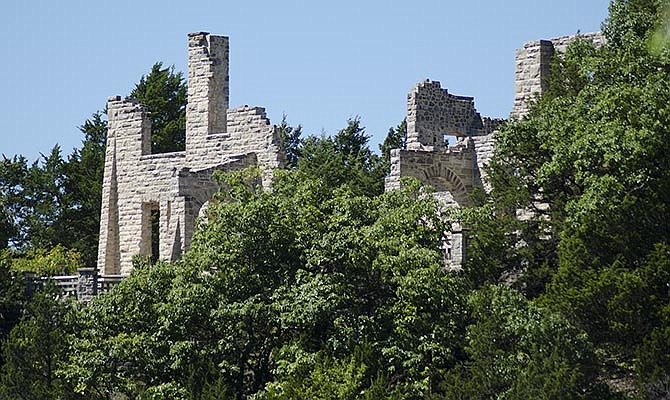[<a href="https://www.newstribune.com/news/health/" style="color:#33AEFF">access the News Tribune Health section</a>]
Five Missouri State Parks will close Thursday evening after crowds flocked to enjoy the spring weather - but none of the closures are in Mid-Missouri, and there are still ways to stay active outside and keep a safe distance.
The state is closing five parks starting 5 p.m. Thursday in response to concerns the springtime crowds were too large at a time when several cities and counties are ordering residents to stay home as much as possible and the state has banned gatherings of more than 10 people in order to slow the spread of COVID-19, the disease caused by the new coronavirus.
The parks will be closed until April 30.
Four parks will completely close:
- Castlewood State Park in St. Louis County.
- Elephant Rocks State Park in Iron County.
- Watkins Woolen Mill State Park in Clay County.
- Weston Bend State Park in Platte County.
St. Joe State Park in St. Francois County will close its off-road vehicle riding area, and all parks may close parking lot gates when they are full, according to a news release from Missouri State Parks.
State Parks had already stopped overnight camping, lodging and events, and closed visitor centers to encourage social distancing. Other than the five closed parks, day use areas, trails and boat ramps are still open at state parks. Before heading out, check the State Park website to see the latest updates.
Mike Sutherland, director of DNR's Division of State Parks, said if a park looks full, it is. Whether Missourians are inside or outside, they need to follow social distancing guidelines, he said in the release: keep 6 feet between yourself and others, avoid crowded areas, wash hands often, avoid touching your face, cover your mouth with your elbow when you cough or sneeze, and stay home if you are sick.
"We understand the importance of physical activity and getting outside during this unprecedented time," Sutherland said. "However, we have to make changes to operations at some facilities, due to overcrowding, to ensure public safety."
All state parks in Mid-Missouri are still open, but the state will continue to evaluate the situation and make changes or close more parks as needed, according to the release. Anyone visiting parks that are still open should bring water, hand sanitizer, wipes and soap because parks have limited services.
Jefferson City parks are mostly still open, and staff have increased efforts to sanitize surfaces, though visitors should be cautious and must practice social distancing guidelines. Bathrooms and water fountains have closed, so bring water, soap and hand sanitizer, and be sure to keep a safe distance from other visitors.
All courts and playgrounds at Jefferson City parks are also closed, as are The Linc, Washington Park Ice Arena and Oak Hills Golf Center.
Missouri Department of Conservation spokesman Robert Hemmelgarn said he isn't aware of crowding issues at any of Missouri's conservation areas. The department is monitoring the conservation areas to make sure they're still safe to visit. It's imperative visitors keep a safe physical distance from one another, he said.
In general, conservation areas closest to larger cities are used the most, so spots farther from town could be more secluded, Hemmelgarn said. Earthquake Hollow Conservation Area in Callaway County and Spring Creek Gap Conservation Area in Maries County are two of his favorite areas that tend to have fewer visitors.
Anyone can find conservation areas near them on the department's website.
"There are also plenty of great ways for many Missourians to get out and discover nature without leaving their own property, from backyard birding, to gardening, or taking time to remove invasive plant species and replacing with native species," Hemmelgarn said.

